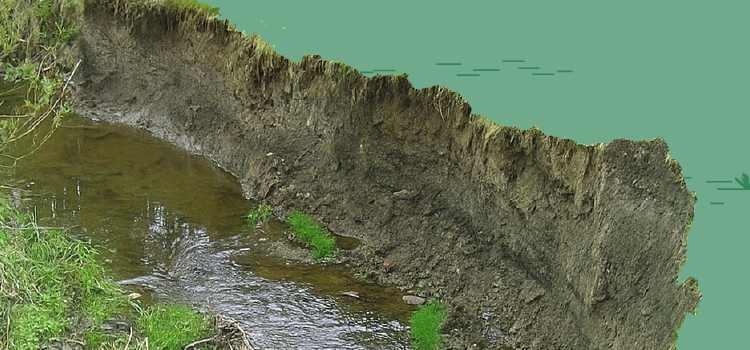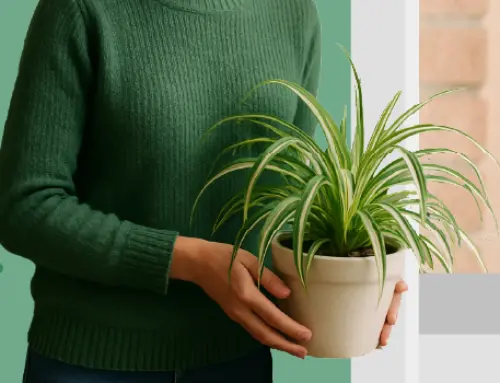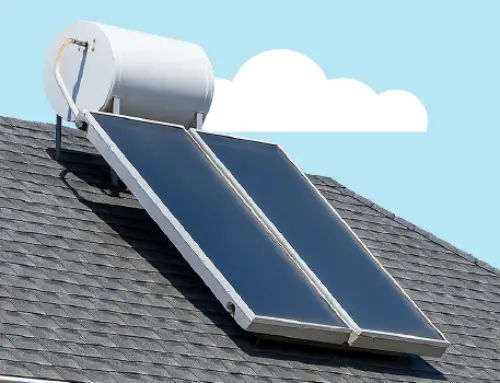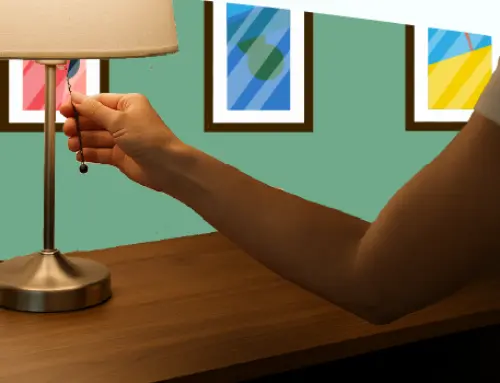What are the Pros and Cons of Soil Erosion?
by Jenna Mendez
26.6 min read

Soil erosion might sound like a distant agricultural concern, but if you own a home, plant a garden, or care about your community's environment, it's a problem that could be happening right under your feet.
From damaged landscaping and flooding risks to declining soil health and higher energy costs, unchecked erosion isn't just bad for your yard; it's a ripple effect that can do some good but mostly harm.
We take pride in being a trusted source for all things eco-friendly. If you're interested in learning the pros and cons of soil erosion, we've got what you need to know. We'll break down the causes, types, and real-world costs of soil erosion, plus give you practical ways to prevent it on your property. Let's dive in!
Key Points of This Article:
- Soil erosion is primarily caused by water, wind, poor land management, and deforestation, which strip away the nutrient-rich topsoil essential for plant growth and land stability.
- Soil erosion can lead to serious environmental and economic problems, including loss of fertile land, increased risk of flooding, water pollution, and damage to infrastructure like roads and buildings.
- Although often harmful, erosion can have some benefits, such as creating new landforms, enriching soil in other areas with redistributed nutrients, and helping shape natural landscapes like valleys and riverbanks.
- Preventing soil erosion involves practical steps like planting ground cover, using mulch, redirecting water runoff, building terraces, and maintaining healthy soil to protect property and the environment.
What Causes Soil Erosion?
Soil erosion happens when the top layer of soil gets worn away by water, wind, or poor land management. This topsoil is the most important part of your yard as it holds nutrients for your plants, helps keep moisture in the ground, and supports strong root systems. Erosion can happen naturally over time, but it becomes a much bigger problem when it’s caused or sped up by human activity. Some of the most common causes of soil erosion include:
- Heavy rain. If the ground isn’t protected by grass, mulch, or deep-rooted plants, intense rainfall can easily wash away loose topsoil.
- In the Midwest, natural disasters like floods and tornadoes are common and can accelerate erosion since these weather phenomena work best by stripping away vegetation, shifting soil, and washing away land.
- Stormwater runoff from rain or melting snow. This can wash soil downhill, into drains, or off sloped yards, making erosion a threat.
- Wind can blow away dry, loose soil, especially in open, bare areas without vegetation.
- One of the most overlooked causes of soil erosion is gravity. Gravity pulls soil downhill over time, especially on sloped yards, where erosion can happen faster if water flows downward unchecked.
- Your location and where you choose to build your home. Homes built on hillsides, near waterways, or in low-lying flood zones may be more vulnerable to erosion.
- Construction and yard work. Projects that remove trees, grass, or shrubs can expose bare soil, increasing the likelihood of erosion.
- Poor drainage, clogged gutters, and even overwatering your lawn can slowly wear down soil, leading to erosion.
- Climate change. Climate change increases the frequency of extreme weather, bringing more intense rain, drought, and temperature swings that weaken soil stability and cause erosion.
How Does Deforestation Cause Soil Erosion?
Deforestation causes soil erosion by removing the trees and plants that naturally protect and hold soil in place.
When vegetation is cleared, whether for farming, development, or logging, the land becomes bare and exposed to rain, wind, and gravity. That exposure sets off a chain reaction that weakens the soil and allows it to wash or blow away more easily. Here’s a closer look at how deforestation causes soil erosion:
1. Tree Roots Are Removed
When trees are cut down, their root systems, which once held the soil tightly together underground, begin to die off. Without those roots anchoring the ground, soil becomes loose and far more likely to shift or break apart during rainfall or disasters.
The loss of roots also disrupts the soil’s ability to absorb and hold water. Instead of soaking into the ground, rainfall runs off more quickly, further eroding the surface layer and stripping away valuable nutrients. According to the University of Kentucky, over time, this leaves the soil less fertile and less able to support healthy vegetation growth.
2. Rainfall Hits the Bare Soil Directly
In a forest, leaves and branches absorb much of the impact of rain. But once that canopy is gone, rainfall slams directly into the exposed ground. This impact breaks apart the top layer of soil, making it easier to wash away.
3. Surface Runoff Increases
Without vegetation to slow down and absorb rainwater, more water flows across the surface of the land instead of soaking into the ground. This fast-moving runoff picks up loose soil particles as it moves downhill, which can lead to more floods in areas with weak soil.
4. Rills and Gullies Start to Form
When water runoff occurs, it begins cutting small channels into the soil, especially on sloped or uneven land. These tiny channels called rills can grow into deeper ditches known as gullies. This stage of erosion removes large amounts of soil and makes the land harder to use or restore.
5. Soil Structure and Health Breakdown
Deforestation doesn’t just remove trees; it often involves removing the leaf litter, mulch, and plant roots that improve soil texture and fertility. Without that organic matter, the soil dries out, compacts, and loses its ability to support regrowth. This means erosion becomes harder to stop.
What Are the Main Types of Soil Erosion?
Soil erosion doesn’t happen in just one way; it can take several forms but there are four main forms you should know. Understanding the main types of soil erosion helps homeowners, farmers, and landscapers recognize the signs and take steps to protect their land. Here are some of the most common:
Splash Erosion
When raindrops hit bare soil, they break apart the top layer and scatter soil particles in all directions. This is the first stage of water erosion, and it happens quickly, especially if your lawn or garden isn’t covered with plants, mulch, or grass.
It loosens soil structure, making it easier for the next rainfall to carry more soil away. You might not notice it right away, but it silently starts erosion problems around your yard.
Signs of splash erosion in your yard include:
- Pitted or splattered soil after heavy rain
- Mud stains on sidewalks or nearby surfaces
- Exposed roots or pebbles on the soil surface
Sheet Erosion
Sheet erosion happens when a thin, even layer of topsoil is washed away over a large area by rainwater that flows gently across the surface.
Often called “invisible erosion,” sheet erosion causes extensive soil loss in both cultivated and non-cultivated environments. This is common on lawns, driveways, or gardens with poor drainage or slope. It weakens your soil over time, even though you might not see dramatic changes at first.
Signs of sheet erosion on your property include:
- Grass thinning or dying in patches
- Soil looking smoother or more compacted after rain
- Water puddling or flowing in a wide path down a slope in your yard
Rill Erosion
Rill erosion happens when small streams of water form tiny channels or “rills” in the soil, usually on slopes or uneven land. As water flows downhill, it starts cutting into the soil, forming shallow trenches; these are rills.
Rills can get deeper over time, especially after several rainstorms. Rill erosion is one of the most common types in agricultural and residential settings.
Signs of rill erosion in your yard or farmland include:
- Small grooves or ditches in your yard after rain
- Water flowing in the same narrow paths every time it rains
- Washed-away mulch or soil near sloped areas

Gully Erosion
According to the University of Illinois, Gully erosion is the most severe form of erosion, causing trenches 1-30 feet deep on a property at one time.
This is where water creates deep channels (called gullies) in the ground that are too large to be fixed by basic yardwork. Gullies can cause serious damage to your property, too. They affect drainage, create tripping hazards, and even weaken nearby structures. This type of erosion often requires professional grading or retaining structures to repair.
Signs of gully erosion on your property include:
- Large ditches or trenches forming on your property
- Collapsing soil banks or steep edges
- Water pooling at the base of a slope
Soil Erosion’s Pros and Cons
When people hear about soil erosion, they usually think of damage, and for good reason. Most of the time, soil erosion leads to negative outcomes like poor plant growth, flooding, and land degradation.
But in a few specific natural situations, erosion can also play a helpful role in shaping land or recycling nutrients. It’s important to understand both sides, so you can better protect your property and make informed choices about land care.
Below are the key pros and cons of soil erosion:
Pros of Soil Erosion
While erosion is generally harmful when accelerated by human activity, there are a few limited cases where it serves a natural purpose:
1. Soil Erosion Can Help Move Nutrients to New Areas
As soil is displaced by rain or wind, it often carries nutrients and organic matter with it. These materials settle in low-lying areas like valleys, riverbanks, and floodplains, where they can help create temporarily fertile soil.
This is especially common in river systems, where seasonal flooding brings in fresh sediment that enriches farmland and supports plant growth.
While this benefit is mostly seen in natural ecosystems (not urban yards), it’s one reason why deltas like the Mississippi are historically fertile and still growing.
2. Aids Landform Creation
One pro of soil erosion comes in the form of natural land formation. Erosion is a powerful force that helps carve out the natural features we see around us, like valleys, canyons, cliffs, and rolling hills.
According to the National Park Service, the Grand Canyon is a well-known example of landform creation through millions of years of water erosion. Though water erosion doesn’t directly help homeowners, this process supports long-term ecosystem diversity and habitat variety.
3. Supports the Formation and Fertility of New Soil Development
Erosion doesn’t just wear land away; it also plays a role in creating new soil.
As rocks and minerals break down into smaller pieces, they eventually mix with leaves, plants, and other organic matter. Over long periods of time, this mixture builds up into nutrient-rich topsoil in places like riverbanks, valleys, or gentle farmland slopes ideal for planting and farming.
4. Creates New Habitats for Plants and Animals
When erosion changes a landscape, it can open up new microhabitats for certain plants and animals.
For example, shallow wetlands formed by sediment buildup can become breeding grounds for amphibians, fish, and insects. In coastal and river environments, sediment helps maintain sandbars, marshes, and forest edges, all of which support biodiversity.
While this benefit is highly location-specific, it shows that erosion has a role in the health of a thriving ecosystem.
5. Can Uncover Hidden Resources and Natural History
As erosion wears away topsoil or rock, it can expose valuable minerals or reveal archaeological artifacts buried beneath the surface.
This helps scientists, geologists, and historians learn more about the Earth’s history and ancient civilizations. In some areas, erosion has helped uncover fossil beds and natural resource deposits.
6. Assists A Fresh Start for Soil in Some Spots
In certain cases, erosion may strip away excess salts, decaying organic matter, or pollutants from the soil surface, essentially “resetting” it. Though this is rare and often outweighed by nutrient loss, it can help restore balance in areas with degraded or compacted soil, especially when followed by natural replanting or sediment deposition.
7. Aids Natural Smoothing of Uneven Ground
In rare cases, slow surface erosion can help naturally smooth out compacted or uneven spots in a yard, especially after heavy rainfall. This may make it easier for grass to regrow in those areas and make conditions ideal for even planting in your yard.

Cons of Soil Erosion
While erosion can serve small natural purposes, its negative effects, especially when accelerated by human activity, often outweigh the benefits. For homeowners and environmental advocates, soil erosion threatens everything from property stability to clean water and healthy ecosystems.
Here are some of the top cons of soil erosion:
1. Soil Erosion Leads to Foundation Instability
Erosion near your home’s base can slowly weaken or shift the foundation. As the soil washes away or settles unevenly, it leaves less support for the structure above. Over time, this may cause cracks in walls, uneven floors, and costly structural repairs.
Preventing erosion around your home with proper drainage, landscaping, and soil reinforcement is far less expensive than fixing foundation damage after it occurs.
2. Risk of Yard Damage & Landscaping Loss
Erosion strips away mulch, topsoil, and even plants, leading to damaged lawns, gardens, walkways, and retaining walls. The less topsoil you have, the less likely your land will be able to support plants and vegetation. Over time, this effect can lead to an imbalance in your property’s ecosystem.
3. Leads to Increased Flooding
When soil is lost, the ground becomes less able to absorb water, causing rain to pool or flow toward your house. This raises the chances of basement flooding or standing water in your yard.
Without healthy topsoil to soak up excess rainfall, water runs off much faster, overwhelming drains, ditches, or gutters. Over time, this can erode landscaping, damage outdoor structures, and even push moisture into crawl spaces or foundations, leading to mold damage and costly repairs.
4. Soil Erosion Can Clog Gutters & Drains
As an often-overlooked con of soil erosion, displaced soil often ends up in your drainage systems, leading to clogs, backups, and expensive maintenance. If you live in an area with high winds or a location that’s prone to natural disasters like tornadoes, soil can clog your gutters and drains more often than you think.
5. Erosion Can Lower Property Value
Visible erosion, such as exposed roots, sunken patches, or bare slopes, can make a home less attractive to buyers and reduce resale value. While large-scale coastal erosion causes around $500 million in property losses each year, according to the U.S. Climate Resilience Toolkit (yes, Great Lakes property owners, we’re looking at you), even small-scale erosion in your own yard can drive down curb appeal and signal costly foundation or drainage issues to potential buyers.
Trying to sell a home with major erosion issues can be tough. Most buyers don’t want to take on the extra cost and effort of fixing or slowing down the damage.
6. Can Lead to Water Pollution
Eroded soil often carries fertilizers, pesticides, and debris into lakes, rivers, and storm drains, leading to polluted drinking water and harm to aquatic life.
As these sediments build up, they can make water murky, clog waterways, and disrupt ecosystems that fish and other wildlife depend on. In residential areas, this runoff may also increase the cost of water treatment, since more effort is required to remove contaminants before water is safe to drink.
7. Can Cause Air Pollution from Dust
In dry or windy areas, eroded soil can become airborne, contributing to respiratory issues and spreading allergens. According to studies conducted by The United States Environmental Protection Agency, particle pollution exposure (like that caused by erosion) has been linked to a variety of respiratory diseases, including heart and lung cancer in adults.
These effects can lead to a lifetime of issues if not treated.
8. Promotes a Loss of Biodiversity
When erosion removes vegetation, it also takes away the food and shelter many animals rely on. This weakens ecosystems and reduces native species.
Without plant cover, pollinators, birds, and small mammals lose critical habitat. Over time, this weakens ecosystems and reduces native species, allowing invasive plants or pests to take over and further disrupt the natural balance.
9. There’s an Increased Risk of Landslides
On hillsides, erosion removes stabilizing roots and soil, increasing the chance of slope failure or mudslides during heavy rain. These slides can destroy property, block roads, and even put lives at risk. Once the ground becomes unstable, it is very costly and difficult to reinforce.
10. More Expensive Water Treatment
When sediment and chemicals enter public water systems, it costs more to clean them. These higher treatment costs might show up in your utility bill. In addition, clogged waterways and reservoirs can reduce water storage capacity, increasing the strain on local water infrastructure.
11. Economic Losses in Agriculture
One of the most significant cons of soil erosion comes from the effects it has on agriculture. Soil erosion is a major cause of lost income for farmers, as reported by the acclaimed science magazine Eos, which states that, on average, 4.7 metric tons of topsoil are washed from every hectare of cropland per year.
According to CNBC, in the Midwest alone, soil erosion translates to $2 billion in economic loss, or a 6% decline in productivity for farmers. With less fertile land to work with, farmers face reduced productivity, rising costs for fertilizers, and lower long-term profitability.
12. Reduced Crop Yield
Loss of nutrient-rich topsoil means plants have less access to the minerals they need to grow, which can lead to smaller harvests and lower profits.
As a result, harvests become smaller, quality declines, and food insecurity can increase in heavily eroded regions. Over time, this also puts more pressure on farmers to use chemical inputs to make up for lost fertility.
13. Damage to farmland
Gullies, ruts, and uneven ground caused by erosion can make it difficult or even impossible to use farming equipment efficiently. This not only raises labor costs but can also make entire sections of farmland unusable, reducing the overall amount of land available for planting.
How to Recognize Soil Erosion on Your Property
Soil erosion doesn’t always show up all at once. It often starts small and gets worse with every storm or season. If you’re not sure whether erosion is happening on your property, the best thing you can do is look for early warning signs around your yard, garden, driveway, or even the edges of your home. Here’s what to look for:
- Bare or Patchy Soil: If you see spots where grass or plants won’t grow no matter what you do, it could be because the topsoil has been washed or blown away. Erosion removes the layer of soil that holds nutrients and moisture, making it hard for anything to take root.
- Exposed Plant Roots: Healthy plants should have their roots fully covered by soil or grass. If you can see roots sticking out above the ground, especially around trees, shrubs, or flower beds, it’s a sign that the soil around them has eroded.
- Rills or Small Channels in the Ground: After heavy rain, look for narrow grooves or ditches running through your yard. If ignored, rills can grow into larger gullies, making your land harder to use and more expensive to fix.
- Soil Buildup in Unusual Places: Check the bottom of slopes, along fences, or near sidewalks for piles of loose soil or sediment. If you see soil where it doesn’t belong, especially after rain, it likely came from another part of your yard that’s eroding.
- Water Pooling or Flow Patterns: If you notice that water tends to pool in the same spot after rain, or you can clearly see the direction water flows across your lawn, that’s a strong sign of surface runoff—a common erosion trigger. Watch for areas where the ground seems lower or more compacted than it used to be.
- Washed-Out Mulch or Landscaping: Mulch, gravel, or topsoil that repeatedly washes out of beds or slopes is a visible sign of erosion. If you constantly have to replace it, the problem isn’t the mulch, it’s the movement of soil underneath.
- Cracks or Settling Around Your Foundation: In more advanced stages, erosion can undermine your home’s foundation or patio by washing away the soil that supports it. Look for cracks, sinking spots, or uneven surfaces around hardscaping or the base of your home.
What Does Soil Erosion Mean for Your Property?
Soil erosion isn’t just about dirt washing away; it’s about losing the very ground your home, yard, and landscaping depend on. When erosion happens, the top layer of healthy soil is carried away by water, wind, or poor drainage. Over time, this can lead to serious and expensive issues, even if you don’t see them right away.
If you already own a home, erosion can damage your foundation, lawn, garden beds, patios, and even plumbing or septic systems buried in the ground. It can also cause water to flow in the wrong direction, leading to flooding, soggy lawns, or mold problems.
If you’re thinking about buying a home, especially in areas with slopes, heavy rain, or poor drainage, soil erosion should be on your radar. A property that looks fine on the surface could be at risk for long-term damage, higher maintenance costs, and lower resale value.
In short, soil erosion weakens your land, your landscaping, and potentially your home’s structure. It may not be obvious right away, but over time, it can turn into a costly problem if not addressed early.
My Experience Preventing Soil Erosion in the Yard of a Loved One (What Worked and What Didn’t)
Soil erosion can be alarming, especially when considering the long-term effects on your property and home. I’ve had a similar experience dealing with erosion, and it nearly cost someone I love their property. Here’s my story and how we were able to prevent soil erosion from taking down a home:
For years, my aunt had dealt with the fear that soil erosion would cause her property to collapse. Sitting on the edge of a retention pond, her property was prone to erosion because of the sloped nature of her lawn.

This is a “before” shot of her Illinois property. During floods and heavy rain, the retention pond would flood significantly, almost to the top of her property line, and lead into her backyard.
We needed a solution fast. She asked for my help because of my extensive experience with gardening and my commitment to eco-friendly practices.
We literally tried everything: planting erosion-preventing plants and covering the eroding ridge with thick soil. However, for this particular situation, those solutions didn’t work until we had a eureka moment!
To prevent soil erosion on this property, we decided to engineer a rock wall. First, we cleared out any obstructions that would hinder our work on the wall. We began by cutting down branches, pulling out plants, and smoothing out the remaining soil.
Next, we laid down tarps and ground covers to stabilize the soil underneath and to hold the rocks in place.

From there, we purchased tons, and when I say tons, I mean literally TONS of rock for our project. We got a combination of rock sizes and shapes in order to lock them tightly together, creating a strong barrier that water couldn’t easily wash through. The mix of larger anchor rocks and smaller filler stones gave the wall both stability and a more natural look, blending in with the landscape while serving its purpose.
From there, we plotted out the points on the property that were the most vulnerable to soil erosion and started there. Shovel by shovel, we began laying out piles of rocks.

Here’s what the end solution around the most vulnerable parts of the pond looks like. For an added layer of protection and to prevent the small rocks from slipping away into the stream, we added cinder blocks and heavier rocks at the bottom to stabilize the structure.

After weeks of hard work, the rock wall was complete, and the most vulnerable areas of the yard were finally secured. Since then, even during heavy rains and pond overflows, the property has held strong, with no more washed-out soil or creeping erosion.
It wasn’t a quick fix, and it certainly wasn’t easy, but seeing the property stand firm was a huge win for both my aunt and me.
This experience taught me that preventing soil erosion often takes a combination of creativity, persistence, and the right materials for the specific situation. What worked for her property might not work everywhere, but it shows that with careful planning and a hands-on approach, even the trickiest erosion problems can be managed. I hope this solution can help one of you!
How to Prevent Soil Erosion
Not all solutions can work for your situation but preventing soil erosion starts with simple, smart changes to how you care for your yard or property.
Whether you’re managing a garden bed, sloped lawn, or runoff from your roof, there are proven methods that help you keep soil in place, protect your landscape, and reduce costly damage.
5 Ways to Prevent Soil Erosion
Here are the top five ways to stop erosion before it becomes a bigger (and more expensive) problem:
1. Cover Bare Soil with Plants or Mulch
Bare soil is the easiest target for erosion because rain hits it directly, and wind dries it out. We recommend keeping soil covered as your first line of defense.
To do this, try planting grass, placing ground covers, or erosion-resistant shrubs (like creeping juniper or vinca minor) to slow these effects.
To protect your garden beds, use mulch, pine straw, or shredded bark to cover exposed soil. This type of mulch is thick and hardy, helping to prevent little critters from digging through your already vulnerable soil.
Covering soil also helps absorb rain, reduces splash erosion, and encourages root growth to hold soil in place.
2. Use Ground Covers on Slopes
Sloped areas are especially vulnerable because gravity pulls water—and soil—downhill. Fast-spreading plants can act like a net to hold the soil together.
The best solution is to choose deep-rooted or mat-forming ground covers (like creeping phlox, cotoneaster, or liriope). If you’re working with a steep slope, you can also use jute netting or erosion-control blankets to stabilize it while plants grow.
3. Redirect or Slow Down Water Runoff
Fast-moving water is a major erosion culprit. If water flows freely across your yard, it can carve out ruts and wash soil away with it.
Extend downspouts to move water away from foundations. Additionally, consider installing swales (shallow ditches), rain gardens, or French drains to slow and spread the flow of water. Lastly, use gravel or river rock in problem spots to reduce splash and erosion from heavy rain.
4. Build Terraces or Retaining Borders
On steep hillsides or garden beds, flat planting areas prevent water from rushing straight downhill and taking soil with it.
To prevent this type of soil erosion, create terraces (small, level planting steps) across a slope using stone, wood, or landscape blocks. Next, install edging around raised beds or pathways to keep soil and mulch from spilling over. This is especially useful in sloped backyards or along the edges of driveways.
5. Practice Healthy Soil Care
Healthy soil is like a sponge that holds water better, resists erosion, and bounces back faster after storms.
The best way to preserve the health of your soil is to add compost to improve structure and moisture retention. For the best results, avoid over-tilling, which breaks up soil structure and increases erosion risk. Lastly, cover crops in garden beds or bare areas during the off-season.
What Are the Best Plants to Stop Soil Erosion?
Planting the right ground cover is one of the most effective ways to protect your yard from soil erosion. These plants are recommended by experts because they help stabilize soil, slow water runoff, and thrive in challenging areas like slopes or shady spots. Here’s why these particular varieties are so effective:
- Creeping Junipers (Juniperus horizontalis): This hardy evergreen shrub has dense, mat-forming foliage and shallow roots that spread wide, locking soil in place on dry, sunny slopes.
- Vinca Minor (Periwinkle): This evergreen ground cover is known for its fast-spreading roots and low, dense growth, making it excellent for shady slopes and areas under trees.
- Forsythia: Forsythia is a vigorous, woody shrub with deep-reaching roots and strong branch systems that help hold soil together—especially useful on hillsides and embankments.
- Japanese Spurge (Pachysandra terminalis): Ideal for shady, moist environments, this low-maintenance ground cover spreads quickly through underground stems, helping to knit soil together in difficult-to-grow areas.
- Spotted Dead Nettle (Lamium maculatum): This adaptable ground cover grows in both sun and shade, spreads quickly, and has fibrous roots that grip soil and prevent washout.
Where to Buy Soil and Supplies for Erosion Control
Whether you’re starting small with mulch and plants or tackling a slope with erosion blankets and drainage solutions, here are the best places to buy soil and supplies for erosion control.
- Local Garden Centers & Nurseries: Best for erosion-fighting plants like ground covers, native grasses, and shrubs. You’ll also find mulch, compost, and region-specific advice.
- Landscaping Supply Yards: Ideal for bulk topsoil, gravel, erosion-control fabric, and materials for swales or terraces. Great for larger areas or sloped yards.
- Home Improvement Stores: Stores like Lowe’s and Home Depot offer bagged soil, mulch, seed mixes, edging, and simple drainage fixes like splash blocks and rain barrels.
- Online Erosion Control Suppliers: Some online stores offer erosion blankets, native plant kits, and soil stabilizers—delivered to your door.
- Local Conservation Districts or Extension Offices: Many offer native plant sales, free erosion tips, and local contractor referrals. Great for low-cost, eco-friendly solutions.
FAQs
Is erosion good for plants and animals?
In most cases, no, erosion is not good for plants or animals. It tends to strip away the nutrients, shelter, and stability that ecosystems need to thrive. But in very specific natural environments, erosion can play a small, supporting role.
How many years of usable topsoil are left?
According to the Ohio Country Journal (OCJ), if current soil erosion and degradation trends continue, the world could lose most of its usable topsoil within 60 years.
Can soil erosion ever be a good thing?
In limited natural contexts, yes, erosion can play a beneficial role. However, modern erosion, driven by deforestation, farming, and development, is mostly harmful and outpaces nature’s ability to recover.
Soil erosion isn’t just a problem for farms or forests; it’s something that affects yards, gardens, property values, and the health of our planet. When topsoil is lost, it becomes harder to grow food, protect wildlife, and keep our water clean. And once that fertile layer is gone, it takes centuries to rebuild.
But the good news? Small, intentional actions like planting erosion-resistant plants, using mulch, or supporting clean energy efforts can make a real difference.
At Santanna, we’re proud to support homeowners and the environment through our Earth-Friendly Electricity and Natural Gas Plans. For every enrollment, we donate to plant trees in partnership with One Tree Planted for global reforestation efforts*, helping to restore degraded land, prevent erosion, and improve the health of our soil and air. Interested in this solution? Explore these plans here.
* Santanna Energy Services (Santanna) works in partnership with One Tree Planted. For every residential Earth-Friendly Santanna gas or electricity initial enrollment or renewal, Santanna, via its One Tree Planted partnership, will plant trees after 60 days of billed usage. Plans may vary. See plan details for eligibility and current tree-planting promotions.
Jenna Mendez is a Midwest native with lifelong roots in Illinois and time spent in Ohio during college, giving her a deep understanding of the Midwest region’s people, climate, and energy needs. She brings firsthand experience and local insight to topics that matter to Midwest homeowners, especially energy efficiency, sustainability, and home living. Jenna specializes in writing about eco-friendly living, all things Midwest, renewable energy, and practical ways to reduce energy costs. Jenna brings a trusted, and local hometown voice to every article she writes, helping readers live well, and sustainably, right where they are.








